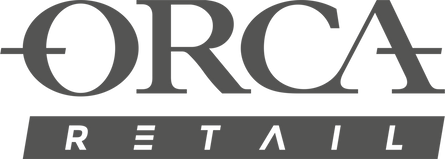
The rise of rigid inflatable boats: Overview of the global market for 2025

Source: The Business Research Company
Rigid Inflatable Boats, also known as RIBs, are gaining popularity globally.
These versatile vessels, combining performance and comfort, meet a wide variety of needs.
In 2023, the global market size for Rigid Inflatable Boats was estimated at USD 2.8 billion, and it is expected to reach USD 3.6 billion by 2033, with a compound annual growth rate (CAGR) of 2.54%.
In this article, we will explore the current trends in the Rigid Inflatable Boats market, the top purchasing countries, and the key companies shaping this industry.
The Top 10 Countries Buying Rigid Inflatable Boats
The countries ranking among the largest buyers of Rigid Inflatable Boats in 2024 are:
- United States
- Australia
- United Kingdom
- France
- Germany
- Italy
- Japan
- Canada
- Brazil
- United Arab Emirates.
From a geographical standpoint, North America dominates the Rigid Inflatable Boats market, representing nearly 40% of the global market in 2021. This dominance is attributed to a well-established boating culture, coupled with strong demand for versatile and reliable boats. The United States, with its vast coastline and penchant for nautical activities, remains the leading RIB buyer.
Conversely, the Asia-Pacific region is experiencing the fastest growth, fueled by emerging economies like China and India. Rapid urbanization and the development of maritime infrastructure are driving demand for RIBs for various applications, from coastal security to recreational purposes. The marine tourism market is also booming there, leading to sustained investments in boat fleets. Tour operators are investing in RIBs to meet leisure expectations at sea, thus strengthening this region's position in the global market.
In regions like the Middle East and Africa, demand for Rigid Inflatable Boats is also increasing, supported by the growth of recreational tourism. The appeal of these vessels lies in their ability to navigate challenging conditions, making them ideal for search and rescue missions, as well as sea excursions.
Europe accounts for about one-third of the global market, led by the United Kingdom and France, which are also expanding, supported by maritime tourism initiatives.
The growing demand for nautical activities

With the increase in recreational nautical activities, the demand for Rigid Inflatable Boats (RIBs) has seen a significant rise.
Many boaters choose these vessels because of their robustness and flexibility, essential for navigating at sea, on lakes and rivers.
The users, whether they are fishing enthusiasts, water sports lovers, or expedition fans, seek boats offering both comfort and performance.
The quest for maritime adventures, such as ecological excursions and island visits, also stimulates this demand.
Consequently, tour operators are investing in RIB fleets to meet the growing expectations of tourists.
The attractiveness of RIBs also comes from their ability to navigate in difficult conditions, thus expanding their use in emergency situations, such as search and rescue missions.
The military segment as another growth driver

A significant portion of the demand for RIBs comes from the military sector.
Indeed, armed forces worldwide are investing in RIBs for their patrol, surveillance, and rescue operations.
This trend is accelerating, particularly in response to rising threats such as piracy and maritime terrorism.
Governments recognize the importance of having a modern and efficient fleet. Thus, they are modernizing their equipment, which often results in purchasing new RIBs or renovating existing ones.
This segment is therefore an essential pillar for the expansion of the global RIB market.
Market innovators
The RIB sector is evolving rapidly, notably thanks to technological innovations. Manufacturers are exploring new production methods, such as using ultra-lightweight and resistant composite materials. This not only improves the durability of the vessels but also their maneuverability and performance at sea.
The integration of digital solutions, such as navigation systems and communication devices are also transforming this market. Consumers are looking for boats that not only meet their safety expectations but also offer modern connectivity to enhance their sailing experience.
Several companies play a key role in the rise of the semi-rigid boat market.
Among the leaders are Zodiac Marine & Pool, AB Inflatables, Highfield Boats, and Avon Marine. These companies stand out for their constant innovations in design and technology.
Indeed, Zodiac, renowned for its performance, continues to invest in advanced technologies. Its inflatable boat models incorporate modern materials and sophisticated navigation systems, offering users an enhanced experience.
Other market players, such as Brig Inflatable Boats and Walker Bay Boats, are also adopting innovative approaches to meet the varied needs of consumers.
Conclusion: A Promising Future
The future of the semi-rigid boat market looks promising, with continuous growth expected until 2033.
As the demand for versatile and efficient nautical solutions increases, market players must remain attentive to trends and consumer needs.
Innovation, quality, and quick response to market changes will be key elements to capitalize on this dynamic.
Further Reading: Questions / Answers on the Semi-Rigid Sector
What are the existing product segments in the semi-rigid boat market?
Single skin RIBs dominate the market with a 78% share, while double skin RIBs occupy the rest of the segment.
What are the main applications of semi-rigid boats?
Semi-rigid boats are primarily used in the following sectors:
- Commercial (main usage segment).
- Military
- Rescue
- Others
What are the most important brands in the global market?
The main market players, representing over 26% of the shares, include:
- Walker Bay Boats
- HIGHFIELD BOATS
- Zodiac Nautic
- Tornado Boats
- ASIS Boats
- AB Inflatables.
PVC or Hypalon, what do semi-rigid buyers choose?
According to Fortune Business Insights in 2021, the majority of semi-rigid boats sold were made of Hypalon, accounting for about 60%, compared to 40% for PVC models.

